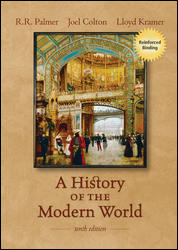
History of the Modern World, 10th Edition (Palmer)Chapter 25: Coexistence, Confrontation and the New Global EconomyChapter OverviewBy the late 1950s, the world had been transformed in many ways, but the Cold War continued to threaten the prospects for global peace. Many Soviet leaders proved more open to the possibilities of arms control and peaceful coexistence, but tensions flared up under Khrushchev’s rule. The presence of Soviet missiles in Cuba provoked a dangerous confrontation. The U.S. battled communism in Vietnam, but public outcry and the impossibility of victory eventually led to withdrawal. Under Nixon, the U.S. established friendlier relations with both the Soviet Union and China. However, the world was soon troubled by other problems, namely a recession which was accompanied by stagflation and structural unemployment. Conservative governments scaled back the social spending of previous years in efforts to stimulate the economy. Reagan’s hard-line policies toward the Soviet Union renewed the threat of nuclear war after the Soviet invasion of Afghanistan had rekindled Cold War tensions. Finally, in China, Mao’s successor, Deng, led efforts to stimulate economic growth and modernize China, which in turn generated demands for greater political liberalization. However, hardliners within the party violently repressed the movement for reform, although China continued its economic transformation. |  |















